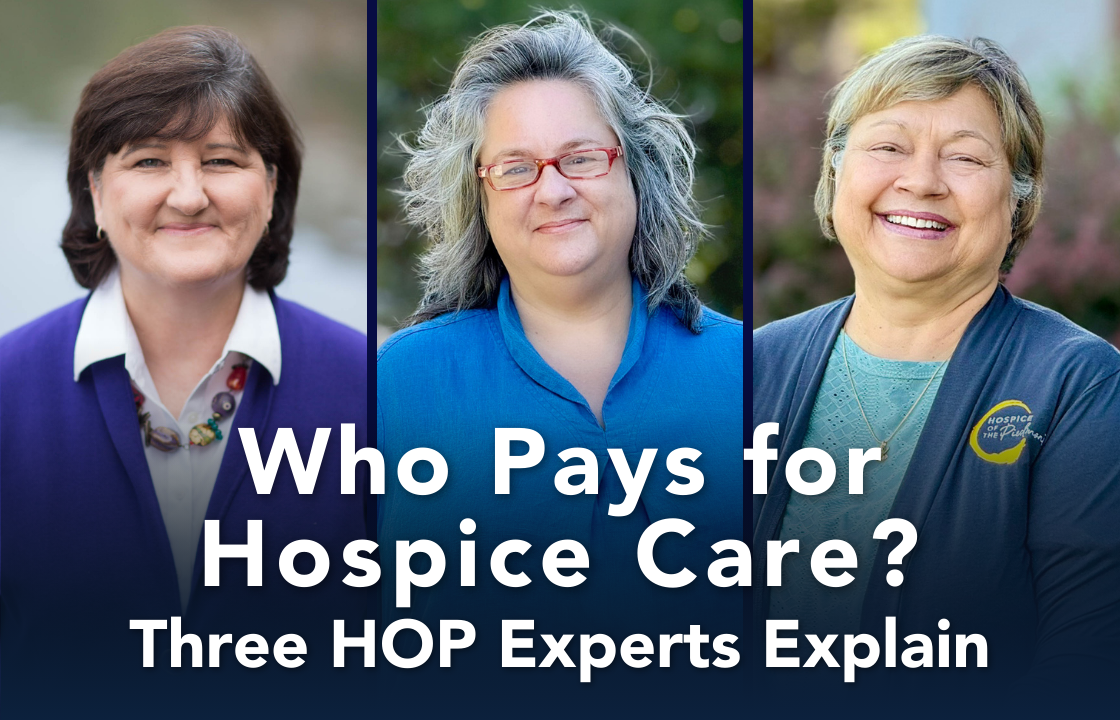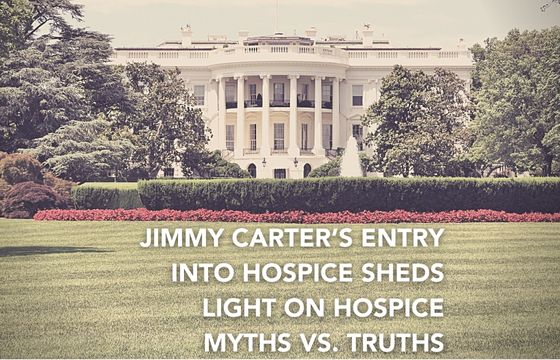A few years ago, Hospice of the Piedmont commissioned a market survey. As part of that study, we learned that about 40% of people in our community did not know hospice was a Medicare benefit.
Recently, we talked to Stephanie Gonzalez, a member of our admissions team who regularly speaks with families about their decision to enroll in hospice. She was not surprised by the study’s findings. “Every day, patients and families ask me how hospice gets paid for,” she says.
Realizing that paying for any healthcare can feel overwhelming, we thought sharing more information about who pays for hospice care and what services are covered might be worthwhile. In addition to Stephanie, we spoke with two other members of our Admissions Team, Mary Apperson and Lois Pearson. Collectively, these three women have more than 60 years of experience in healthcare.
If any of this sounds confusing, don’t be intimidated. Hospice admissions professionals are incredibly kind and knowledgeable. Your admissions nurse or hospital liaison can help you figure out what makes sense in your situation.
The Short Answer: Most People Use Medicare
If you’re too busy to read this, here’s the Reader’s Digest version: In the U.S., the vast majority of hospice patients (~85%) are covered by Medicare. If you have Medicare, the Hospice Benefit is something you’ve earned. You owe it to yourself – and your family – to take advantage of it.
In this article, we’ll spend most of our time discussing how Medicare’s Hospice Benefit works. Other payers (e.g., Private Insurance) benchmark their coverage against Medicare requirements, so it’s worth understanding what Medicare offers even if you don’t have Medicare.
After we cover Medicare, we’ll discuss alternative payment options, which collectively account for about 15% of hospice patients.
To provide clarity and peace of mind, we want to explain five ways hospice care is funded and what services are covered.
#1. Medicare
Understanding Medicare Coverage
As discussed, Medicare is the primary payer for hospice care. Here’s how Medicare makes hospice care accessible:
- Medicare Part A: This covers 100% of care related to their hospice diagnosis for eligible patients, including services such as medical care, medication, and support from an interdisciplinary team. Stephanie often says to families, “If you have Medicare, everything I’m going to talk to you about is covered under Medicare Part A. 100%.” Families often feel relieved upon learning this.
- Medicare Part B: While Part A covers the hospice benefit, Part B continues to cover medical services and treatments that are unrelated to the terminal illness. For instance, if a patient needs treatment for an unrelated condition, Part B will still apply with the usual deductibles and copayments.
What’s Covered:
Hospices receive a daily rate to cover all necessary care for a patient’s terminal illness. This payment model ensures that patients and their families do not face unexpected costs for essential services and allows hospices to provide comprehensive care tailored to each individual’s needs.
Here’s an overview of what’s covered in hospice care:
- Interdisciplinary Team: Including doctors, nurses, social workers, counselors, and volunteers who provide physical, emotional, and spiritual support.
- Home Visits: Regular visits from healthcare professionals to manage symptoms and provide care.
- Durable Medical Equipment: Such as wheelchairs, hospital beds, and oxygen equipment.
- Medical Supplies: Such as bandages and catheters.
- Medication: For symptom management and pain relief related to your hospice diagnosis.
- Bereavement Support: Counseling and support for family members during and after the patient’s end of life.
What’s Not Covered:
- Room and Board Fees: In nursing homes or hospice facilities unless the patient is under General Inpatient Care (GIP) or Respite Care. GIP is for pain control or acute symptom management that cannot be managed at home, and Respite Care provides temporary relief for the patient’s caregiver. For example, Hospice of the Piedmont charges $350 per day at the Hospice House. However, community donations can help cover these costs in certain situations.
- Non-Hospice-Related Medications: Medications for conditions unrelated to the terminal illness. For example, if a patient has a hospice diagnosis of pancreatic cancer, medications for unrelated diagnoses like high blood pressure or diabetes may not be covered. Patients may need to use Medicare Part D, private insurance, or pay out-of-pocket for these medications.
- Curative Treatments: Treatments aimed at curing terminal illness are not covered once hospice care is chosen. Patients wanting to continue curative treatments may be interested in our Palliative Medicine program.
#2. Private Insurance
Not everyone needing hospice care is over 65 and Medicare eligible. Fortunately, most private insurance plans offer hospice benefits. However, coverage details can differ, so patients need to verify their specific plans for deductibles, pre-authorization requirements, or any limitations or caps on hospice coverage.
At Hospice of the Piedmont, our admissions team is experts in contacting insurance companies and helping you figure out these details. Mary highlights one situation common to patients using private insurance: “A lot of insurances typically follow what Medicare does, but patients should check with their insurance companies to see if a deductible needs to be met first.”
#3. Medicaid
Medicaid provides comprehensive support for eligible low-income individuals, regardless of age. Younger patients entering hospice care have sometimes been fighting a tough diagnosis for an extended period. Consequently, they’ve frequently depleted savings and other financial resources prior to entering hospice.
In general, the Medicaid Hospice Benefit is very similar to Medicare. However, unlike Medicare, Medicaid does cover room and board expenses in skilled nursing and assisted living facilities. As Mary points out, “If they have Medicaid and they’re in a facility, it covers room and board, it covers hospice services, it covers everything.”
#4. TRICARE and VA Benefits
Military families and veterans can receive hospice care through TRICARE and VA benefits. These programs cover a wide range of services, ensuring that those who have served our country receive the care they deserve. TRICARE and VA benefits offer comprehensive coverage, similar to Medicare, including medical care, medication, and support services.
#5. Private Pay and Charity Care
Lastly, those without the above resources always have the option to pay for their own care. As a nonprofit, Hospice of the Piedmont offers financial aid screenings to help determine if charges can be reduced or waived.
Mary emphasizes, “If they do not have a payer source, we offer a simple financial aid screening to determine if there can be a reduction or perhaps even a waiver of what they would pay.”
We are grateful for the generous community philanthropy that helps cover care for those in need.
Final Thoughts
Lastly, it’s important to note that in some cases, patients may have more than one payer source (e.g., Medicare and Medicaid), and the coordination of benefits between multiple payers can impact coverage and out-of-pocket costs. Additionally, charges can vary depending on circumstances, so it’s essential to check the details with your hospice provider. Your hospice admissions team can guide you through these details.
Hospice of the Piedmont is dedicated to providing exceptional care regardless of financial circumstances. If you have any questions or need further information, please reach out to us. We are here to support you every step of the way.



